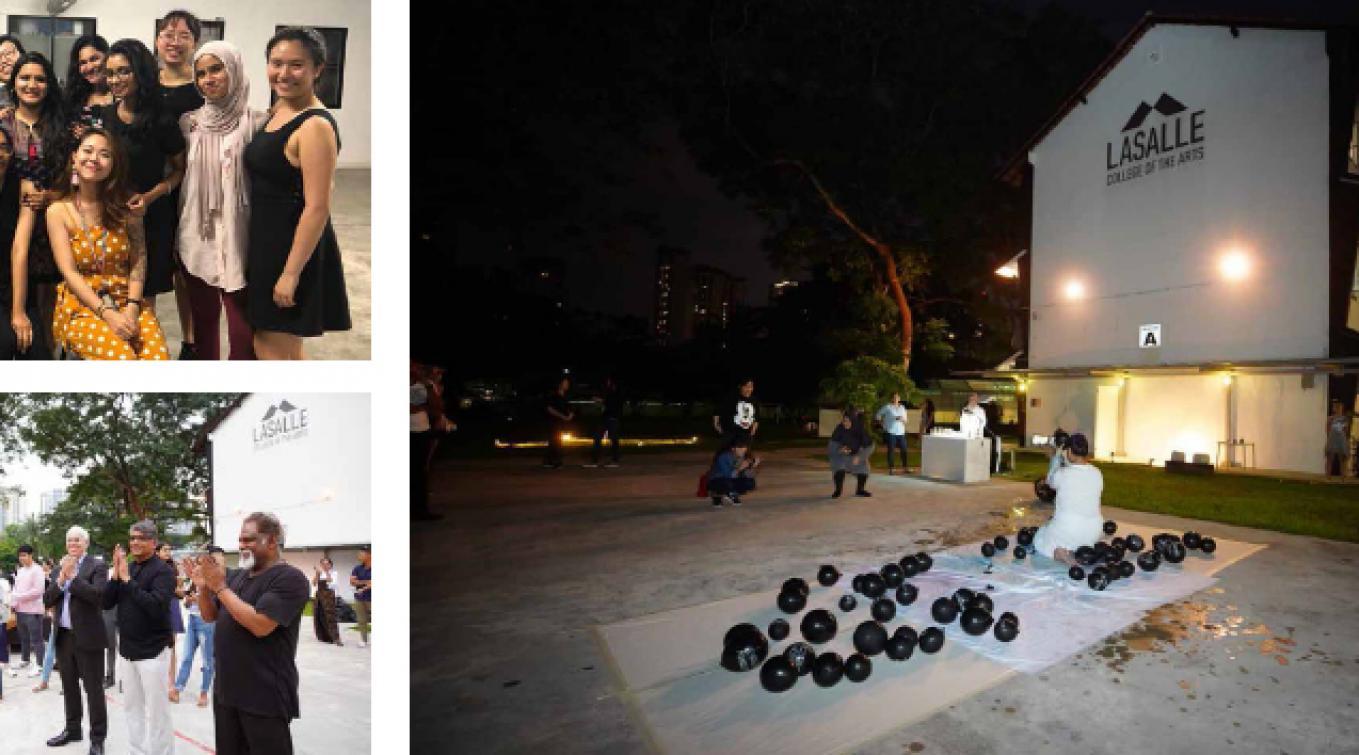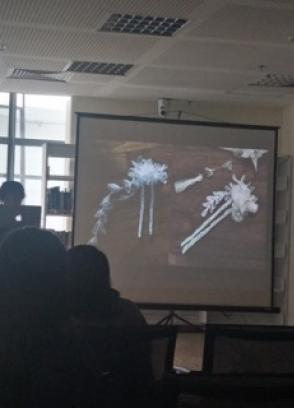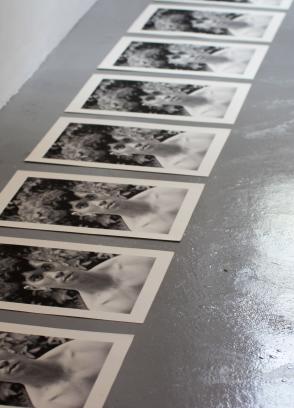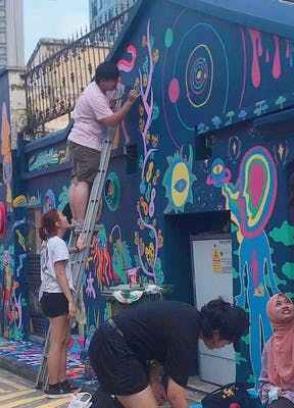by Nitya Jain, BA(Hons) Fine Arts Level 2 (2019)
The planning and execution of the event brought the entire cohort closer together. From sharing all the ups and downs and resolving them together, to sharing ideas, research and critiques to support each other.
One Night Only was an event that every BA(Hons) Fine Arts student looks forward to: a day full of enjoyment and immense fun when not only do the artists get to display their works but also experience the dos and don’ts of an exhibition. It was LASALLE’s annual showcase of works from semester-long elective modules taken up by the Years 2 and 3 of the BA(Hons) Fine Arts Course. As suggested by its name, the event lasts only a few hours. It was graced by Professor Adam Knee, Dean of Faculty of Fine Arts, Media and Creative Industries, as the guest of honour.
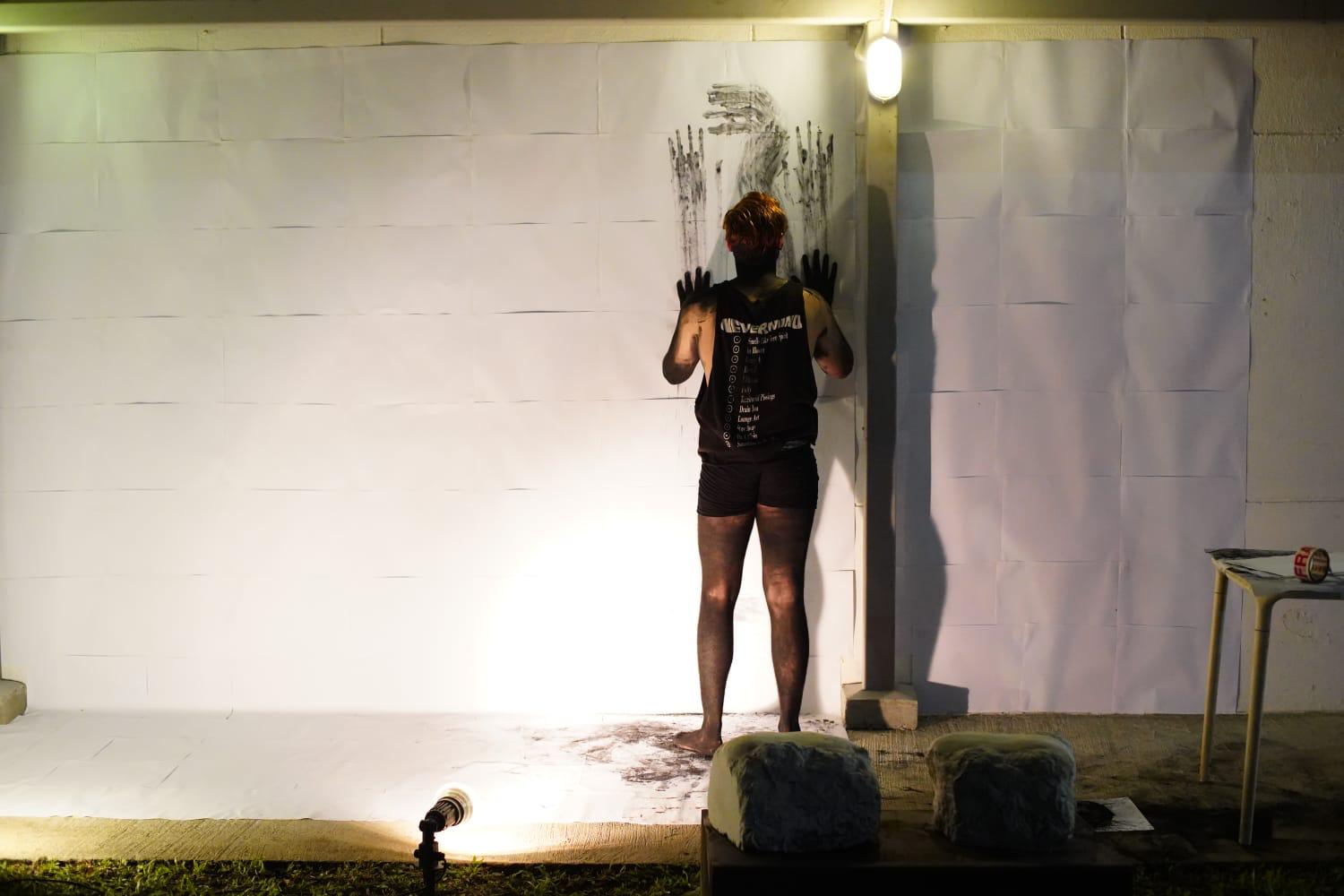
The number of participating artists was higher than the previous year, and so the variety of artworks, mediums, materials and practices was comparably greater. This year, a few new electives were introduced. One example was Poetic Moments elective introduced by lecturer Chen Kerui. One Night Only was the perfect opportunity for students to apply their conceptual skills in practice: to tactfully deal with situations and scenarios, and to finally, by working through these strategically and aesthetically, deliver their ideas to the audience.
Fiction and Narrative, conducted by lecturer Donna Ong, allowed students to explore art along with genre, form and narrative techniques. In sharp contrast to these, the art in Kinetic Structures conducted by lecturers Dhiya Rahman and Andreas Schlegel, which was presented in a room, and although ‘caged,’ was all about movement. Here, students were given the opportunity to explore strategies of transforming physical objects into movement using technology as their support. More technology comes into play in Video Art by lecturer Urich Lau, and Sound-A Mutual Tuning by lecturer Chong Li-Chuan. Both these electives exploited the potentialities of technology and combined it with the students’ accumulative knowledge and observations in order to produce different images and sounds as a response to movement, performance, space, text and narratives.
Gardening as Praxis supervised by lecturer Shirley Soh was a way for the students to connect with nature and organic materials. Similarly, Welcome To The Jungle, managed by lecturer Woon Tien Wei, delved into knowing how to respond to being an artist in Singapore and how one’s practice affects/ effects his or her surroundings. Not forgetting the Performative Body conducted by lecturers Elizabeth De Roza and Susan Sentler which was yet another hit among students as this elective allowed them to use their bodies as material to explore their own inhibitions. And finally, the Artists as Curators elective curated by Wang Ruobing that oversaw and managed all the electives’ artworks, including looking after the logistics and marketing of the show.
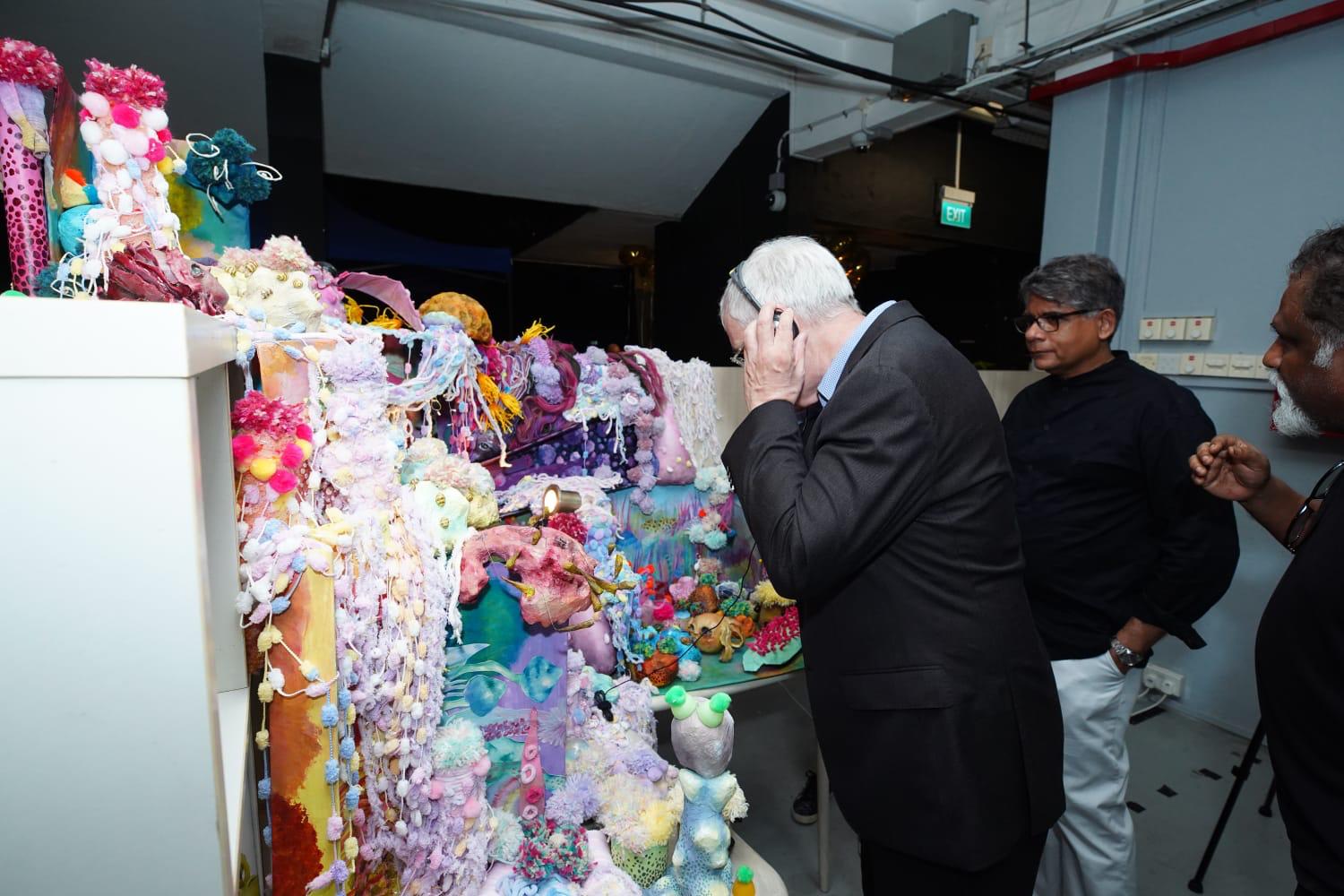
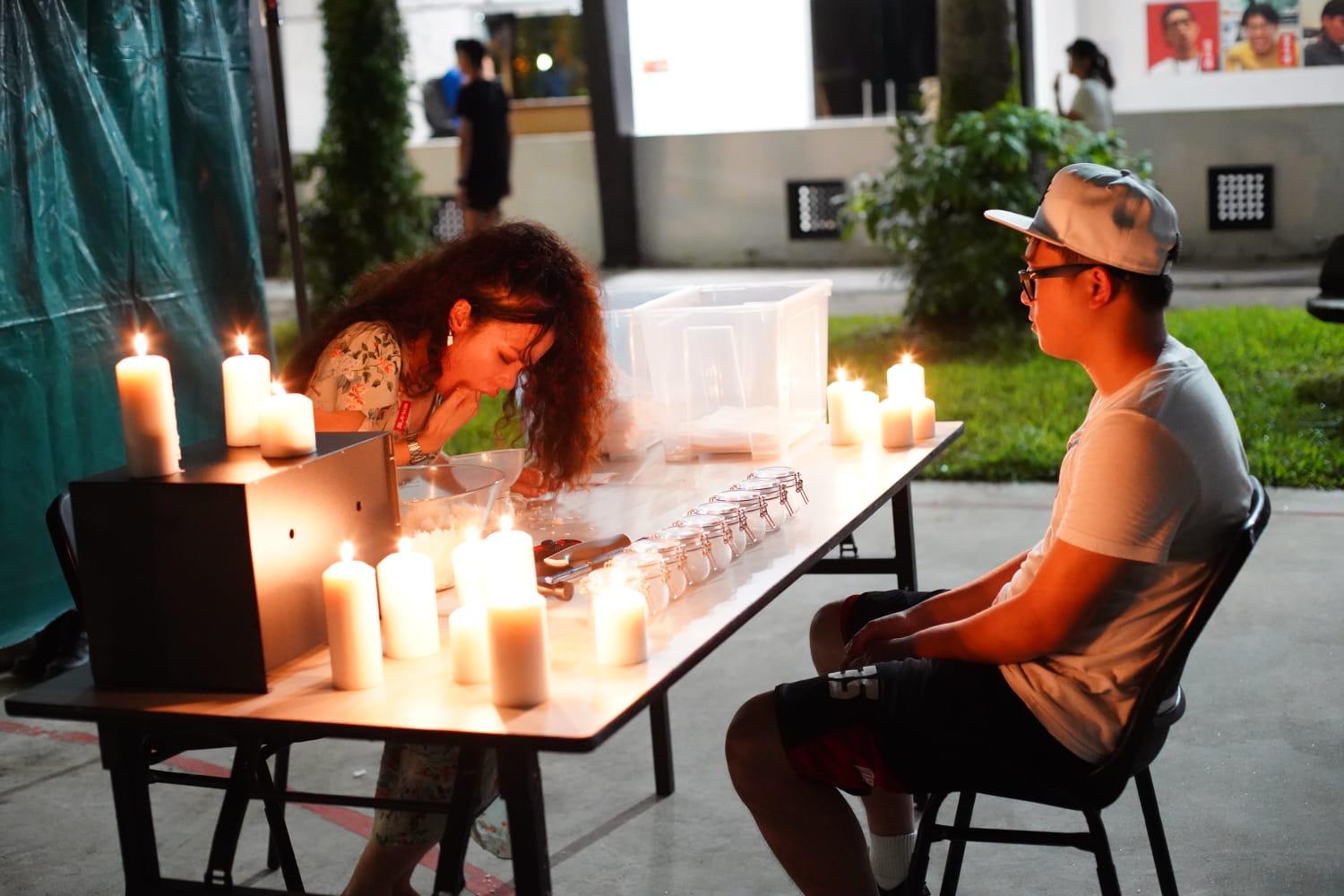
Preparations for the event started three months earlier. But it was not until end September, when our planning, as curators of the show, really began. Choosing our electives was not the difficult part, it was the assigning and allotment of the places that proved to be a truckload of work for us. It would have been a mistake to think it was easy, if we had simply worked on a first-come-first-served basis. We did not focus on giving each elective a specified location for exhibiting. In fact, we allowed the artists to choose their preferred location around the campus, suggesting and advising them to take into account every aspect of using the space, from the audience’s point of view to their modes of exhibiting.
Despite encountering various obstacles, we made sure to overcome them all as a team. Apart from the allocation of spaces, there were various other aspects of the curatorial process, including logistics, marketing and reception. Logistics, which was handled by a team of three members, included technical support among other issues. Marketing required posters, invitations, event information and social networking. We were all involved with reception – setting up the entire venue and making it aesthetically pleasing was a tough exercise.
A map incorporating a QR code showing each work's location and the schedule of performances was provided. Spread around the entire campus, the indoor works were allocated three separate classrooms. The outdoor displays spread out from the corridors, to the open field, courtyards and the hangout area. Even the back of the campus was occupied. The garden area was mostly occupied by the Gardening as Praxis elective; the indoors were mostly assigned to the ones who either needed a projection or whose artworks were site-specific. Since most of the students’ studios were on the second and third floor of both the blocks, the show was mostly held on the first floor. Where an exception was made, we used partitions to secure the hallways, not allowing anyone to enter the studios.
The openness of the Winstedt campus provided flexibilty – allowing artists to express individuality and offering various options of display.
As the event was held in the late evening, the artists had to choose their environment very carefully. With little or no light present for the outdoor works, we had to consider the installation of lights. The corridors were well lit, and the garden was equipped with floodlights. The courtyard in the middle of the two blocks served as the reception area, where the main stage for announcements and the food kiosks were placed. A few performances also commenced in the area. Couches and a few other seating alternatives were arranged for anyone who wanted to settle comfortably down for the evening.
To give a behind-the-scenes account, here are some excerpts from an interview with the head curator of the show, Yashini Renganathan:
Q: What were your expectations before you started this event’s curation? What were you hoping to get from the team and yourself?
A: For myself, well, I took Fiction and Narrative the last time, and Artists as Curators was one elective that I did not want to take; it was my last choice. So this year I thought: why not challenge myself with something I do not want to do, stretch myself and learn new things. As I don’t have much experience in curation and since it's a team effort, I thought I will meet and work with different people. That was for me. For the team, I was aware that we were going to work with a group of people but I didn’t expect that I will be given the opportunity to lead. But in any case, it was a very good experience because I learnt to work around challenges and obstacles. I think that’s a big plus point. And what Ruobing said: “it is a people’s project, not a solo performance.” So I think that was the entire objective for the team.
Q: As you said, it was your last choice. But if you had the opportunity to choose it again, would you?
A: Yes, I definitely would. And I would do it much better this time (laughs). Because it is an experience that taught me that we can’t please everyone—that is one thing I learnt from this, because it’s not about curating six or seven works, it is about curating 100 works. Miscommunication is bound to happen, so we must be flexible through compromise. I will definitely face it all again, working with the same team on areas for improvement to produce better things in the next round.
Q: Looking at last year’s One Night Only, how do you think we have worked this year? In terms of curation.
A: That’s a tough question actually…But I do think I would still give notable commendation for last year’s curation because I think the dynamics of that curation was very different from ours. Last year’s was well curated in the sense that different works were placed around one another, and they sort of created a conversation within that space. But for this year, we worked slightly different. In a sense, I still think that curatorial-wise, they did a very good job last year.
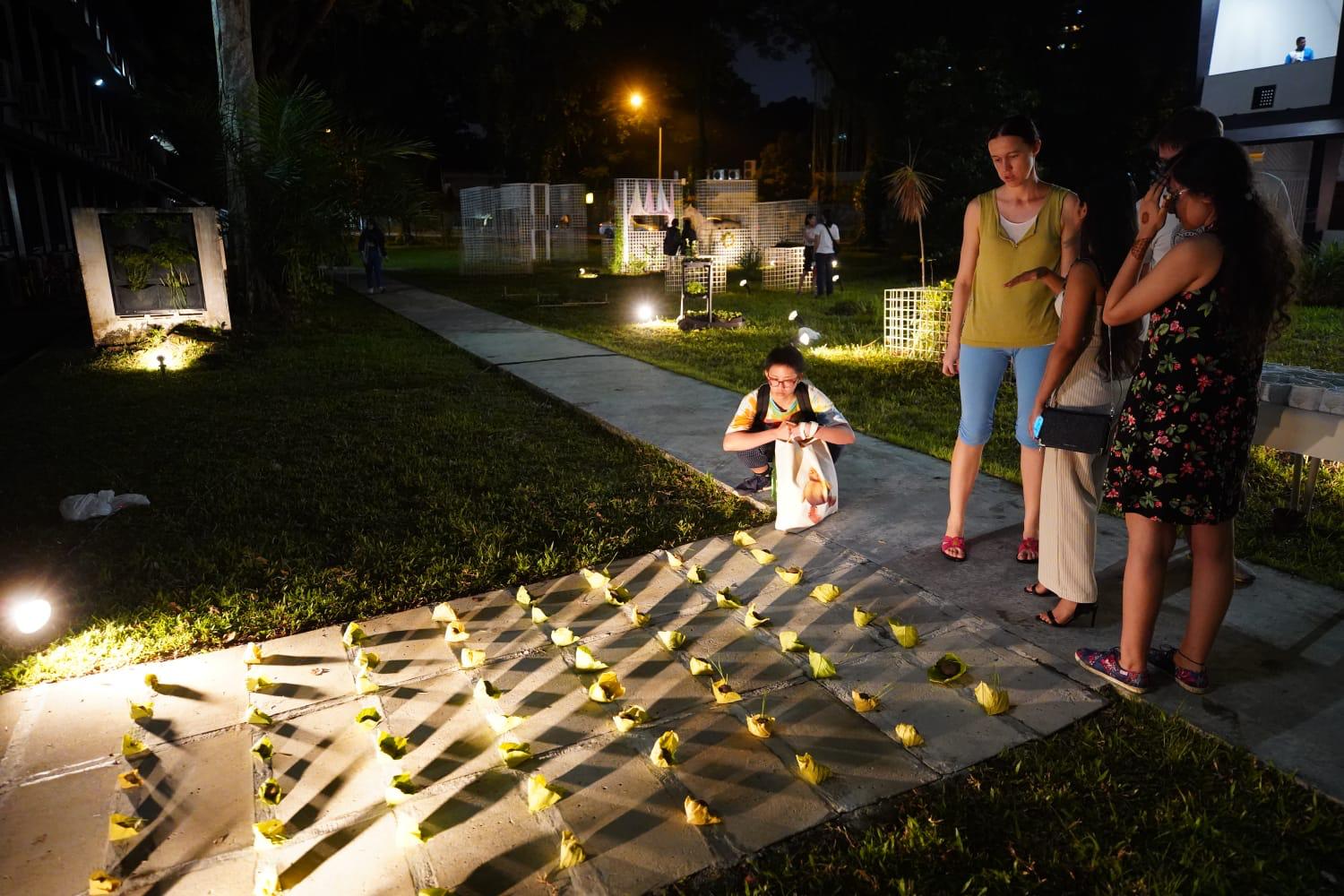
I can say at least for my elective, we did a very good job. It was very organised, well curated. So yes, probably on the same page.
Q: If you had to change something in this year’s curation, what would that be? The way we worked, the outcomes?
A: I think if we had collated what the school houses in terms of equipment, partitions, etc, it would have changed the whole dynamics of how this event would have been structured. If the artists knew what we had to work around, it would have been helpful and bought us more time. Since we had one week less this year, telling them that we had this amount of equipment after they had already done the work, was a bit challenging. I think we can’t change the outcome, but just the structure.
Q: What do you have to say about the problems and obstacles we all faced?
A: Okay, let’s be honest, I think we all know that we faced a lot of obstacles but I think the most common one is always communication. If communication is not done efficiently and in a timely manner and then it kind of just accumulates and affects the working structure. Then it not only affects you, but people working around you because it's not a solo project. I guess this whole process taught not to be so anxious over any problem that comes along but instead deal with it one thing at a time. It is always important to put myself in the shoes of the artist to see where they are coming from. Deal with one thing at a time, and it’s always important to put myself in the shoes of the artist to see where they are coming from. And as mentioned in my opening speech, compassion is key. Instead of getting angry and frustrated at problems, just sit down, put yourself in the other person's shoes and see how you can work around and solve the matter. Instead of pointing fingers, work on how can we move around it. So I think that’s one thing I learnt. When some of the artists saw me wanting to work around the problems, they were more willing to work and move forward to resolve the matter and I think that’s one of the things that I got out of this whole process.
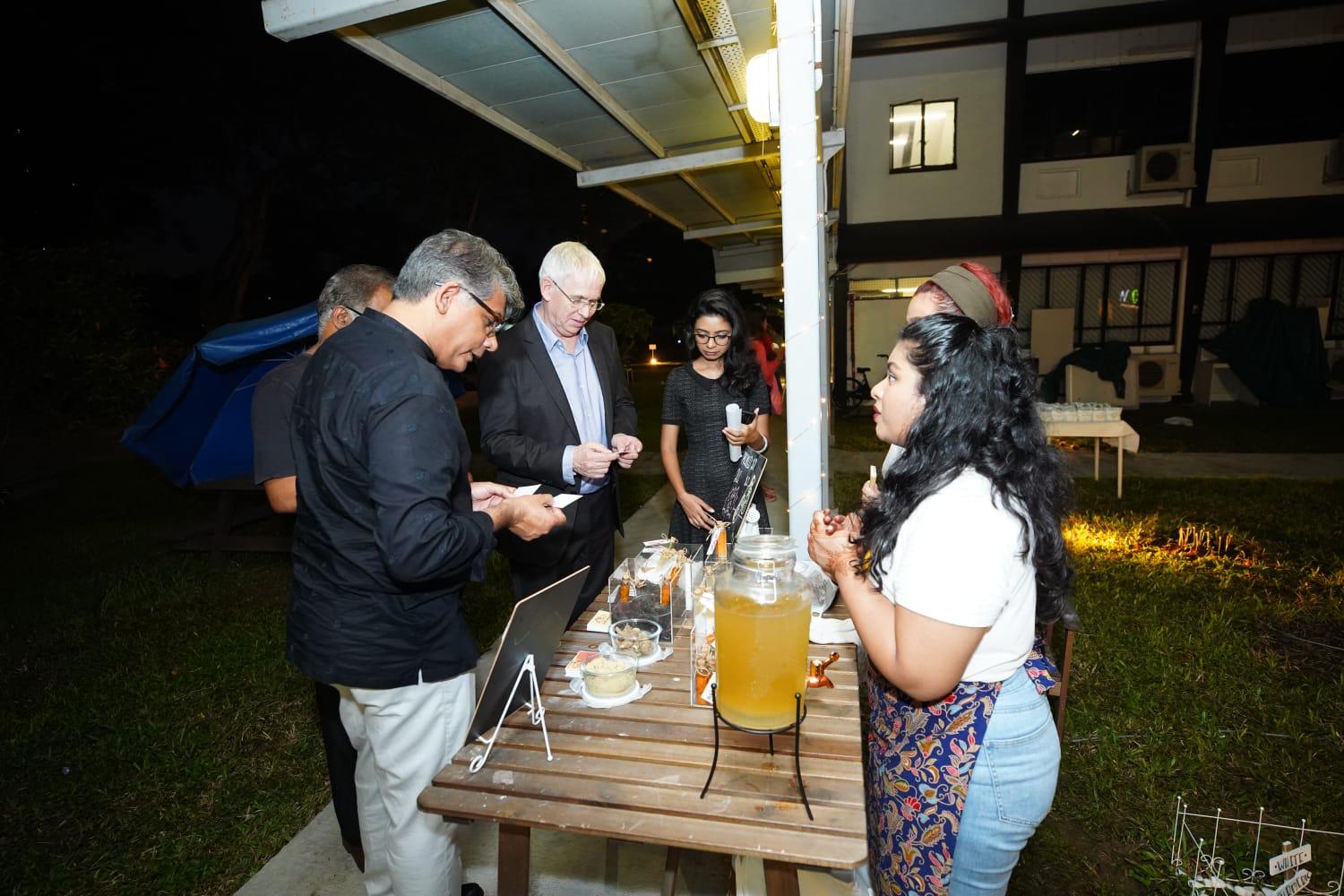
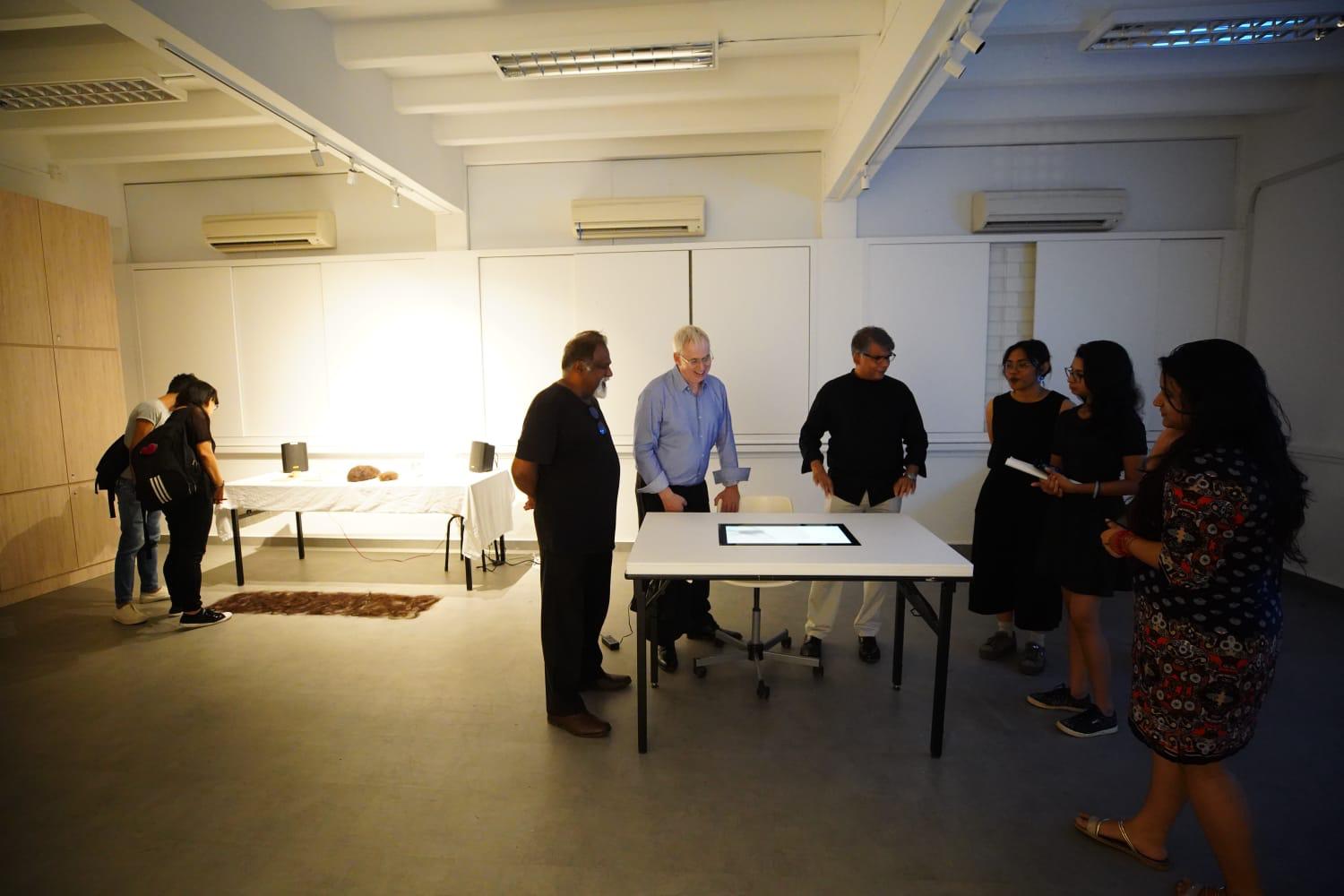
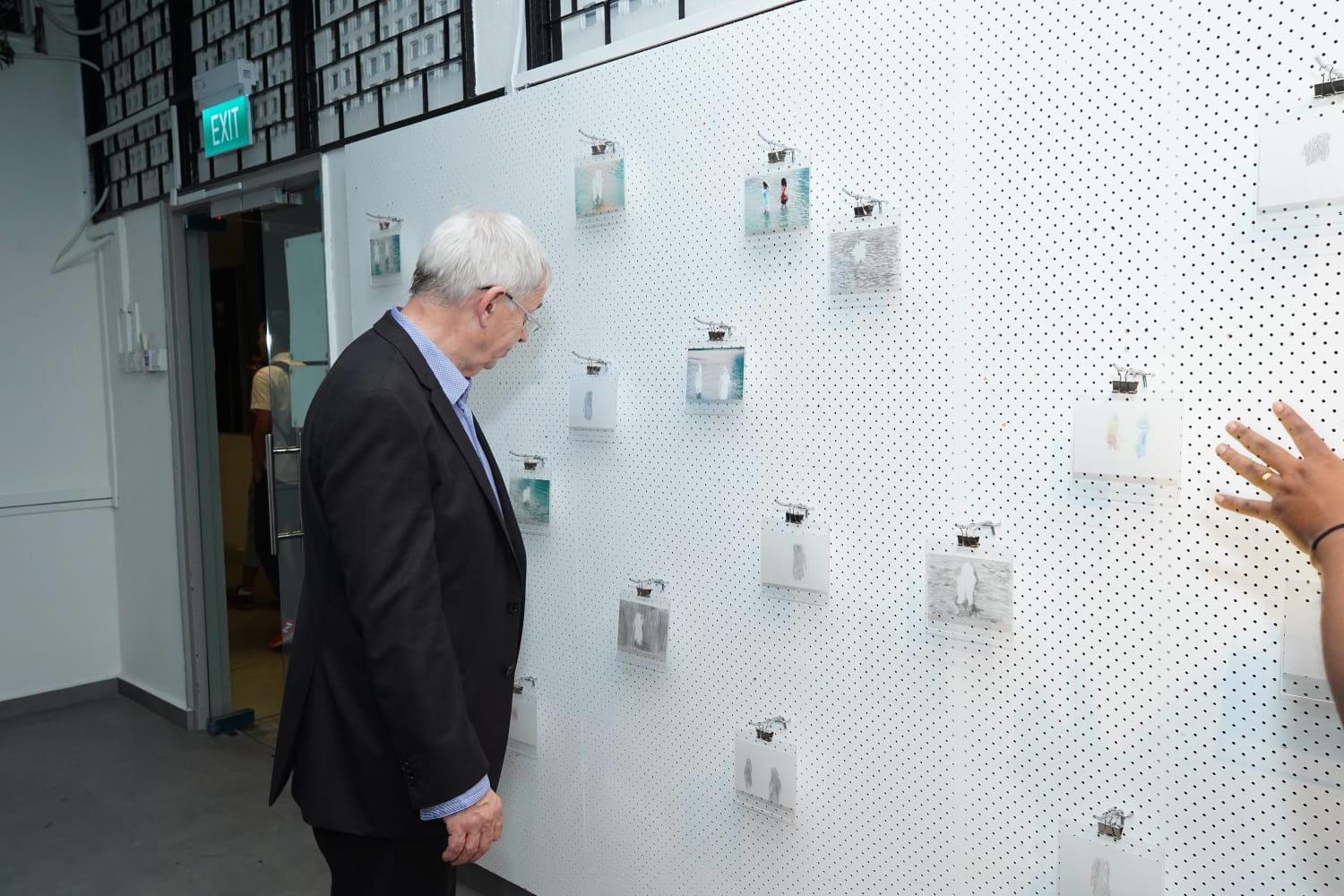
Q: There is always a debate about whether it is the artist or curator who should be more understanding. Who according to you should take the downfall for the situations taking place?
A: Hmm, this is a tough question… Instead of putting that burden on one person, I think it’s a two-way street. Both of them have to take equal responsibility. If anything goes wrong or anything suddenly crops up, it’s not always the curator’s or the artist’s fault. If there is something wrong, both of them have to put in the effort and time to resolve it. I don't see only one party bearing the burden as curation and exhibition is a team effort. The moment you separate the artist from the curator, that's when problems will arise. So yeah, communicating properly and working together is crucial.
Q: In terms of our module being called Artists as Curators, do you think the curator should also play more of a role as an artist because we always get lost in the act of curation and forget the artist part. Though we are artists we don’t pay attention to it. So do you think we should pay more attention to it? And how should the future artist-as-curator group go about it?
A: Yes, I think that is one important aspect. When I was reflecting, I felt that I could have curated my elective better. Once you are in this curator position, and especially as lead curator, there are so many things to oversee. I needed to stretch myself, empathise and understand how we can really help them in their work. It’s not just about plotting works for space allocation but also about understanding the work and what it means. What does the artist want out of the work and how can our curation help them to achieve the desired outcome?
Q: Do you have any advice for the future curators of One Night Only?
A: (laughs) I think we should have fun, learn and don't take things personally. Sometimes it’s not about you or anyone else, it’s just about the situation. I mean, if it’s not going to matter in five weeks’ time then don’t waste time, it’s not worth worrying over.
Overall, the event was an immense success not only because of the high number of guests but also because at the end of the day each artist was able to display his or her work smoothly and successfully. The planning and execution of the event brought the entire cohort closer together. From sharing all the ups and downs and resolving them together, to sharing ideas, research and critiques to support each other. The team of curators worked closely together with LASALLE’s support staff to bring all these together. Lecturers and the students all had to work closely in order to bring it to success, and they did. The entire event gave students the opportunity to learn, understand and overcome their drawbacks and strengths, and also gave them an insight into how important it is for one to understand the idea of collaboration and compromise at the same time.

